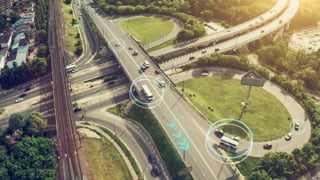Every vehicle has to be insured: it is one of the certainties of running a fleet.
However, the cost of premiums has risen in recent years, as vehicles have become more complicated to repair and the price of parts has increased due largely to supply issues caused by the covid-19 pandemic and the war in Ukraine.
Nextbase says the cost of insurance increased significantly in 2022, rising 14% year-on-year: the highest yearly increase in five years.
However, the price of premiums is not beyond a fleet decision-maker’s control: there are actions they can take to control costs.
Offering to carry a higher excess on a policy could help lower the premiums, as this means the fleet takes on more of the risk on their own balance sheet.
From a non-risk side, this is a key area to think about even before considering risk management initiatives.
This is something that should be discussed internally with your brokers and then through to the insurance and underwriting side
A fleet could also consider self-insuring – see below - an option which becomes more economically viable the larger a fleet is.
It is good practice to renew policies in good time and after proper review. Don’t pay for unnecessary extras. For example, it may be as cheap for you to pay replace windscreens as it is to take out windscreen cover, so why pay the middleman?
A fleet should also have good vehicle security . If a vehicle has tracking fitted, it can be recovered quickly if its location is known.
Further actions focus around the two main factors which affect premiums. One is claims history: an improved claims record should be recognised with lower premiums.
The other is putting together a convincing package of measures which will convince an underwriter your future risk will be lower.
A good starting point if a fleet has not got a robust risk management strategy is to work with its existing insurer to analyse its claim history and highlight areas for improvement.
Fleets can also use driver profiling, data from telematics and information from post-collision interviews to provide targeted training driving.
Dashcams can provide invaluable data for defending claims or swiftly settling at-fault claims.
They are particularly effective against crash-for-cash scenarios; organised fraudulent vehicular claims cost the industry hundreds of millions of pounds a year.
Often insurers presented with a risk management plan are able to provide some funding to a fleet to enable them to implement it: this may be put towards driver training or hardware such as cameras, for example.
The cost of premiums is also influenced by how much any damage repairs cost. This can be minimised by ensuring drivers report any incidents, especially fault claims involved third-parties, immediately.
This is because even in non-injury cases, third-parties can be given expensive credit hire vehicle which are then charged back to your insurer. The sooner you claim, the more control insurers have over costs.
Be honest and encourage drivers to also be honest. If you are at fault, say so. The longer you fight a battle you know you will eventually lose, the more it costs.
Self-insurance
As a company’s fleet gets larger it becomes increasingly logical to increase the excess that it bears and eventually to only insure for losses that it causes to third parties – known as self-insurance.
Third-party risks make up approximately 60% of the premium, own damage makes up approximately 10% and the remaining 30% is typically the costs incurred by its insurer and its insurance broker – covering reinsurance costs, administrative costs, broker’s commission, insurer’s profit margin and Government levies, among other things.
This means that if your annual premium per vehicle is, say, £2,000 for a typical commercial vehicle fleet, it can be seen that the cost of insuring you own damage risks is approximately £200.
If your vehicles are worth, for example, £20,000 each then you know that if you have more than 100 vehicles, you would need to be writing off one vehicle per 100 vehicles insured to be better off.
In other words, if your past track record shows you write off a vehicle only once every three years, then the maths show you would be putting the money spent on comprehensive insurance to one side and paying for your own write-offs.
A fleet that does this does not have to pay the excess, it saves on insurance premium tax and if it does suffer a loss it can choose exactly how it replaces its vehicle.
Fleets considering a self-insured retention arrangement need an awareness of insurance, claims handling and risk controls required; therefore this approach is more suited to larger companies that have the resources and knowledge to manage their claims exposures and funding.
Pros and cons
Pros
- Potential for immediate cost savings which bring improved cashflow
- Additional savings in the even of a better-than-expected loss history
- Isolation from the insurance market cycle
- Incentive for improved fleet risk management culture
Cons
- Can be more expensive than limiting exposure by transferring risk to an insurer
- Systems need to be put in place to settle and monitor claims and negotiate with third-party insurers
- Increased admin burden and impact of management time, costs and resources
- Potentially difficult to get ‘conventional’ insurance again after being removed from the insurance market cycle.






















Login to comment
Comments
No comments have been made yet.